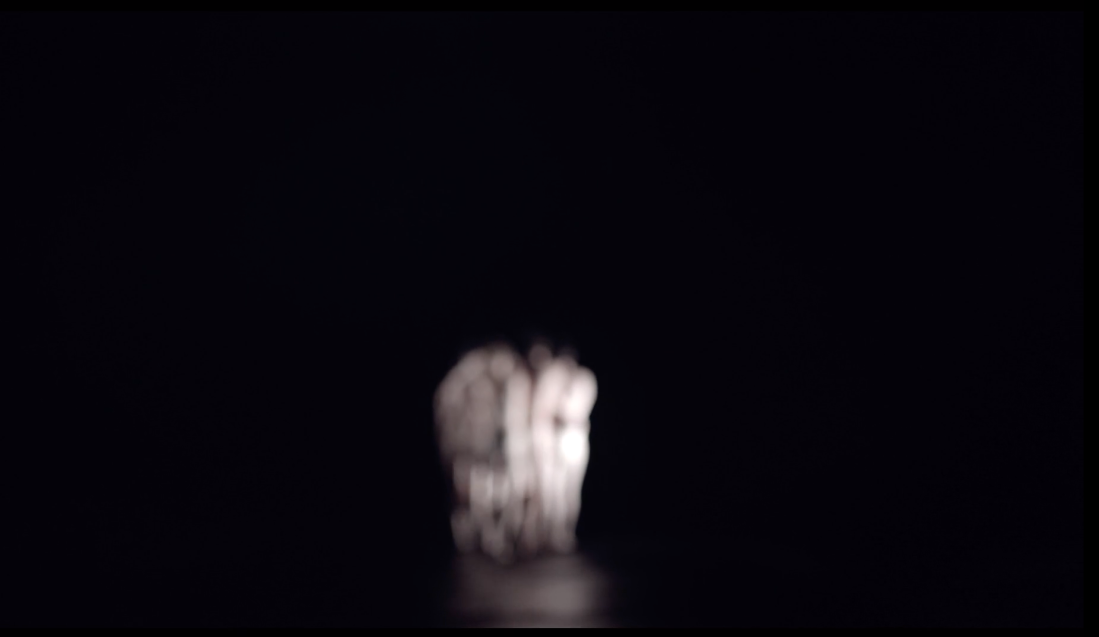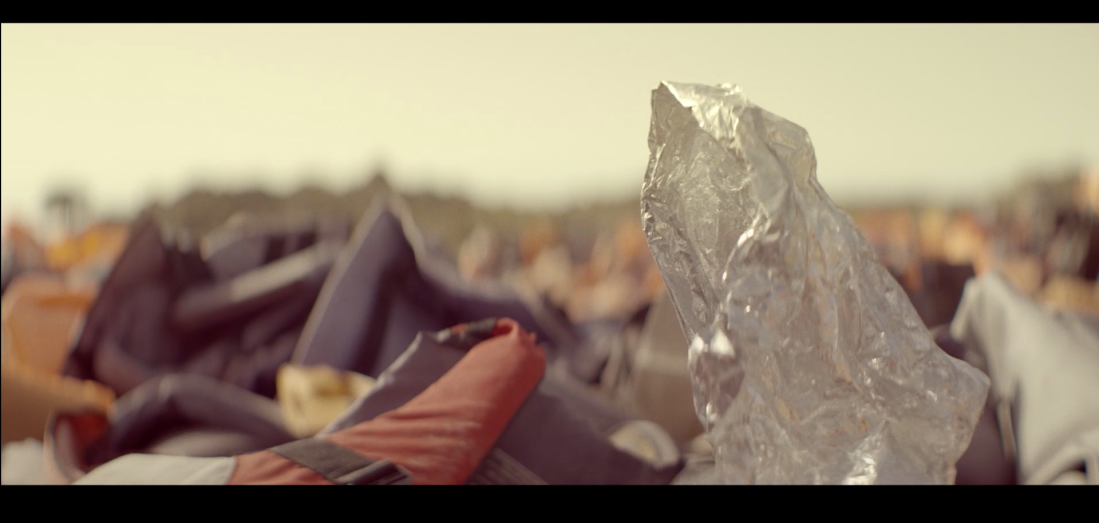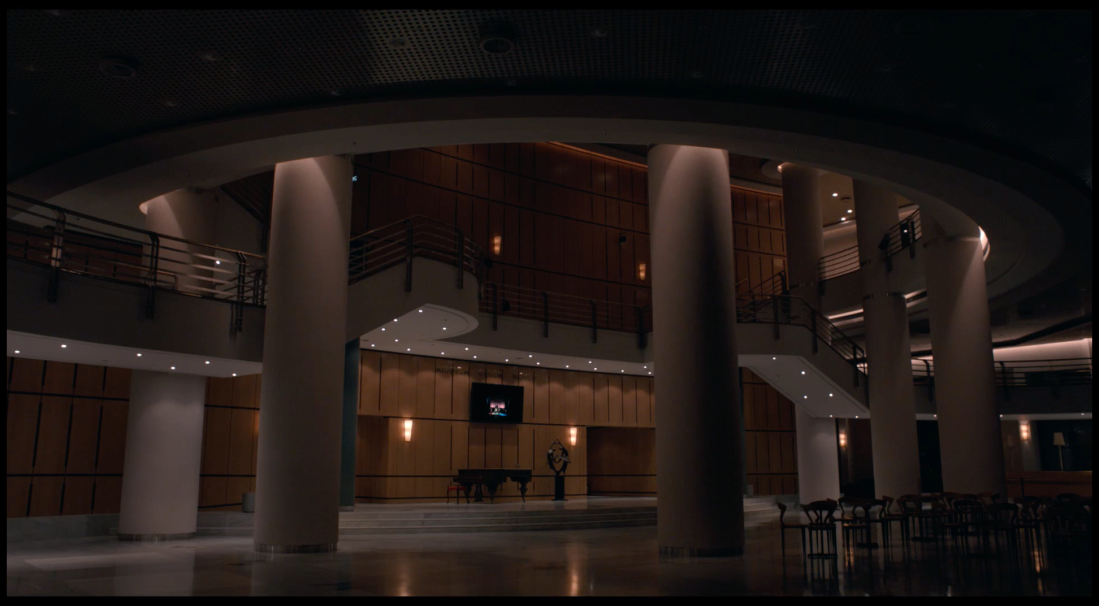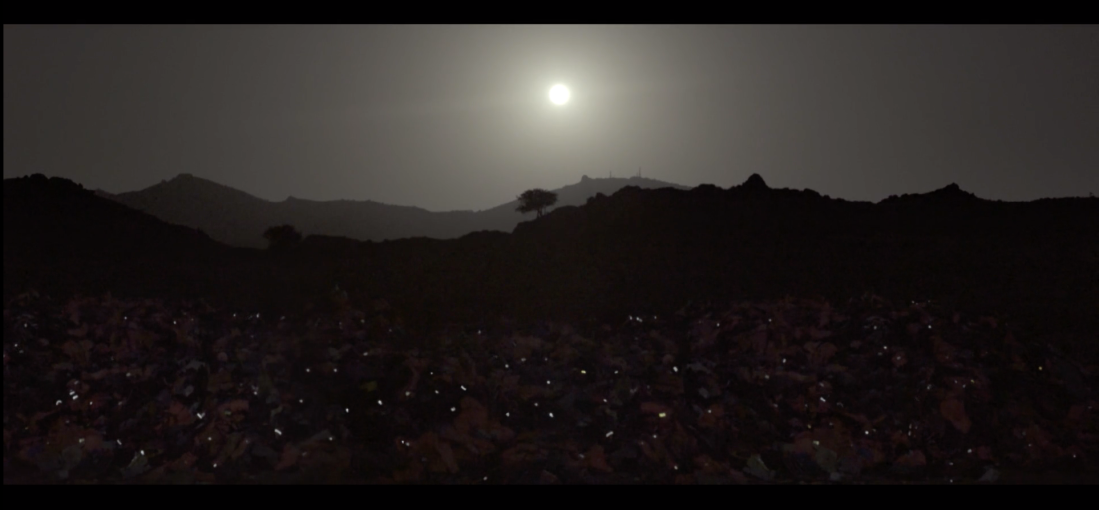Use of “Empty Space” in “Interruption” (2015) and “Eighth Continent” (2017)

Empty Space in Interruption by Yorgos Zois (2015)
In Chinese traditional painting, there is a technique called “liu bai”, roughly translated into “to leave blank”. It is commonly used when painting a subject but not letting it occupy the entirety of the canvas. There is a big portion of the canvas that is just empty space, or blank space. This technique is used to leave space for imagination and elevate the meaning of the work. In cinema, there are techniques used similarly, through plot, cinematography, sound, and editing. By leaving things blank in the picture, sound and editing, viewers’ participation is more engaged and active. Through this cinematic technique, viewers can also be directed to a place of pondering and reflection. In this essay, we will compare the use of “empty space” in Interruption, a feature film, and Eighth Continent, a short film, both directed by Yorgos Zois. In its comparison and analysis, we will unpack the vocabulary of these techniques, how they are used to serve different purposes, as well as their effects on the audience.

Opening of Eighth Continent by Yorgos Zois (2017)
The opening of both films utilizes the “empty space” both sonically and visually to establish a tone and elevate the different senses of the audience. In the opening of Interruption, amongst the darkness, we only see fractured bodies and light in soft focus, sonically, the space is quiet except a buzzing room tone, until we hear the characters’ footsteps. Then, we move closer to an extreme close up shot of someone sniffing and touching another person. The subtle sounds of the movements are amplified, enhancing the sensory experience for the audience, as if we are not watching the film, but also listening, sniffing, and touching. Similarly, in the opening of Eighth Continent, we experience a heightened sensory experience, but through a rather different technique. The film opens with an image of a serene sea. A tiny dot in the middle is floating on the water, and it’s hard to make out what it is. Audience has to really squint their eyes to see its shape. Then, the film cuts to a boat driving toward that dot, and someone picking it up. The film then lingers on the trace on the water for several patient moments. Contrary to Interruption’s extreme close ups, this extreme wide shot has also achieved a similar level of active audience participation, by leaving everything else “empty”, this little orange dot becomes the focus of the frame. This mysterious orange dot also raises questions in audience’s mind, and inevitably evokes possible guesses and interpretations. This question is answered in the next shot, when piles of orange life vests are being transported on a vehicle away from the sea. With two simple shots, viewers are positioned into a place of inquiry – why was there a life vest in the middle of the sea? Did the person drown? Who is the person that picked up the life vest? Why is he picking up life vests? Similar to Interruption, by revealing very little information and leaving things blank, the viewer is put in a position to be actively engaged as the film progresses.

“ghostly” figures in the ending of Interruption
The endings of two films also employee the technique of “leaving blank”, which directs the viewers into a space of critical reflection and pondering. In Interruption, the ending of the theater scenes is a classic cathartic moment, where everyone on stage gets rained on and literally cleansed. However, after that, there is a relatively brief, mysterious shot of some “ghostly” figures in soft focus, occupying only a small part of the frame. The figures walk further and further away, becoming smaller and smaller. There is no diegetic sound, only an atmospheric ambient sound rings in the background. These blurred out human figures are reminiscent of inanimate things, ghosts perhaps? When the screen fades to black for some seconds, these figures reappear again. They are haunting the screen and the viewers. After all that happened in the film, what could this mean? The abstract, emptiness of this “ending” evokes viewers’ need for narrativity, therefore, we invent our own meanings in our head. Again, Zois takes a similar approach in ending Eighth Continent. Under the rising sun, we see an underexposed tableau of countless life vests glittering with the reflection of the sunlight. This image is quite haunting, the inanimate life vests suddenly feel like stand-ins for the refugees that have once worn them. In both films, Zois has fractured the narrative tradition of Greek tragedy as well as Hollywood, in which characters are self-propelling and self-driven. In both of his films, the “protagonists” are stripped away their agency, hiding behind objects of life vests as metaphors in the case of Eighth Continent, and being manipulated by “the chorus” to do what they’re asked to do. The rather “empty” endings enhance this point even further, letting the audience write the resolutions for the characters within it, and derive the meanings themselves.

Inanimate objects “coming alive” in Eighth Continent

empty theater space in Interruption
The use of empty space, in a literal sense, can also provoke critical reflections on power structure and “hauntology”. In Interruption, during the most important parts of the Oresteia play on stage, the camera moves completely out of that space, and shoots surveillance cameras, TV screens, and parts of the theater that the sound of the play reaches. These series of shots are devoid of humans, literally “empty”. The only things we see are inanimate structures and technologies that contain and transmit the play. This technique shifts the focus of the Oresteia from the content to the transmission of it, then to the structure built around the transmission itself. Who built these infrastructure inside the theater? Who is in charge of the play, is it really the chorus? Or is there a higher being? Who has a say in the structure of the play itself? And the ethics of it? Going even further, who constructed the structure of this film? Are we just like the passive audience sitting inside the theater? These are all questions that one might ask, from experiencing these wide, still shots of the interior of the magnificent theater, and the surveillance room. There is an ineffable hauntedness to the whole theater itself – a “hauntology”, in M. Psaras’s words in his essay “Alps: Of Hauntology”. “Hauntology” is a fusion of haunting and ontology. This theater, in some way, has a mode of being on its own, an object-oriented ontology. Because the chorus’ direction of the play happens inside this theater structure, the violence of it is masked under a structure of preexisting language that is stage play. Anything that happens is assumed to be intentional, civic, and safe. Perhaps the structure itself is to be questioned and critically reflected upon. In Eighth Continent, we also see an investigation of hauntology, as well as necropolitics. The close-up shots of inanimate objects swaying in the wind are quite haunting. The objects seemingly have come to life. In Psara’s essay, he talks about the idea of “the return of the dead” as “collectors of some unpaid symbolic debt”. In this case, these life vest wastes suddenly become ghosts that collects the debt of their lives and identities taken away by the unfortunate warfare, famine, economic depressions that forced them into seeking refuge elsewhere. Again, very implicitly, we can see Zois evoking our reflections of seemingly invisible power structures behind these object-oriented ontologies. It prompts our musing on the necropolitics involved in deciding how a person gets to leave, in how a body is territorialized in a global context.

ending of Eighth Continent
However, the audience might also wonder if the aesthetic use of empty space is an ethical approach to the painful refugee crisis in Eighth Continent. The cinematography of this film is stunning, and the pacing unhurried. This aesthetically pleasing approach to a topic so dark and complex in the real world might be controversial. Is this a sentimental manipulation of the actual crisis? Can this achieve a goal to make us critically reflect on this real-life issue, or does it make the reality more comfortable to look at, thus promoting an acceptance of the status quo? In Jacques Derrida’s essay “The Theater of Cruelty and the Closure of Representation”, he explains the idea of “the theological stage”, which means an art production that “comports a passive, seated public, a public of spectators, of consumers, of ‘enjoyers’.” Thus, the production lacks “true volume or depth”, and that the production is offered to audience’s voyeuristic scrutiny. Eighth Continent is reserved, not showing us any face of the refugees, but only let them appear through the metaphor of life vests. There is little “visibility” of the subjects, but does it mean they have avoided the audience’s voyeuristic scrutiny? In a sense, yes. By rejecting to show us refugees’ faces, the refugees will never be easily stereotyped into the pre-existing narratives such as the miserable or the helpless people. However, the use of visual metaphors in this film does not challenge the existing stereotypes at the same time. The life vests can easily become a projection screen for viewers’ own uninformed projection and imagination.
Works Cited
Derrida, Jacques. “The Theater of Cruelty and the Closure of Representation.” Writing and Difference by Jacques Derrida, The University of Chicago Press. 1978.
Psaras, M. “Alps: Of Hauntology.” The Queer Greek Weird Wave, 2016.





